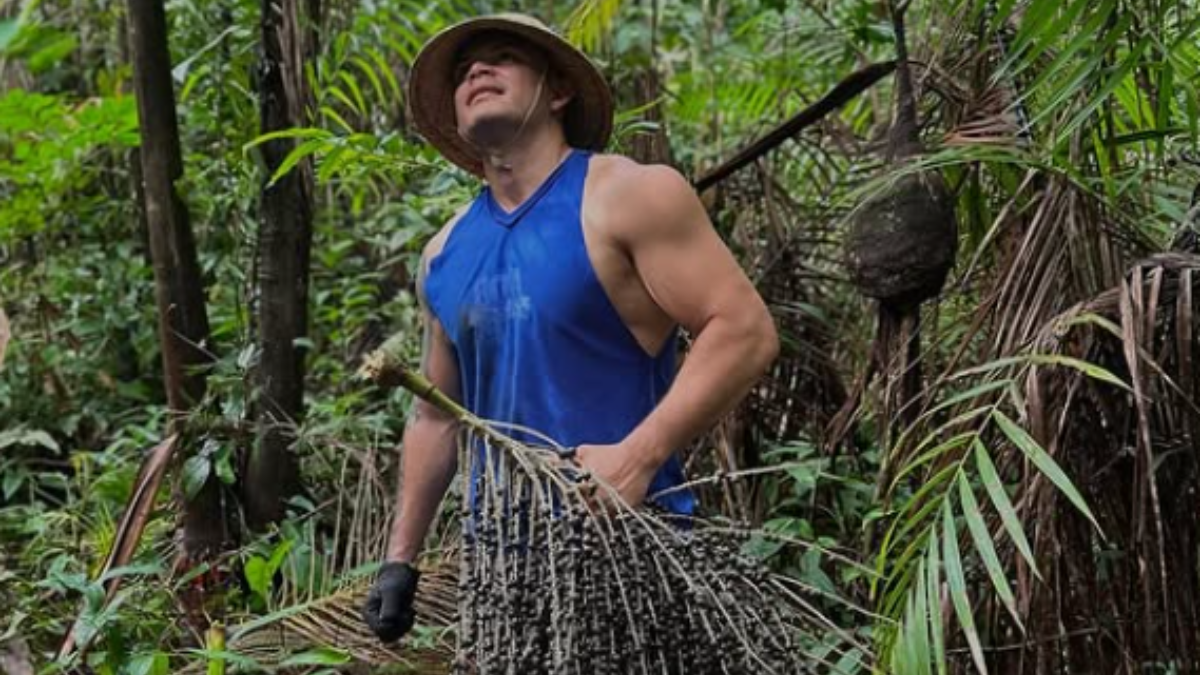Açaí from Pará: History, Riverside Culture, and Sustainability in the Amazon
What is Açaí from Pará?
Açaí from Pará is more than just a fruit — it is a cultural symbol, a vital part of the Amazon's bioeconomy, and a staple in the daily lives of riverside communities. Rich in flavor and nutrients, this small purple berry has gained global recognition while remaining deeply rooted in the traditions of Pará, Brazil. Its journey from the forest to the bowl is not only culinary but also deeply cultural, representing centuries of Indigenous and riverine wisdom, community effort, and sustainability.
Contents
ToggleHistory and Tradition of Açaí in the Amazon Region
The Legend of Iaçá and the Origins of the Fruit
According to Amazonian folklore, the açaí tree was born from the tears of Iaçá, a tribal princess. Her name gives the fruit its title, as "açaí" is "Iaçá" spelled backward.
Açaí as a Staple in Amazonian Cuisine
In Pará, açaí is traditionally served with fish and manioc flour, consumed as a savory meal rather than the sweet smoothie bowls popular in other parts of Brazil and the world. Explore other traditional Amazonian recipes with sustainable seafood that complement the açaí culture.
How Açaí from Pará Differs from the Rest of Brazil
In Pará, the focus is on the natural, earthy flavor of açaí. Elsewhere, especially in southern Brazil and abroad, the fruit is blended with guaraná and sugar, often topped with bananas, granola, or condensed milk. These differences highlight the cultural diversity in açaí consumption across Brazil.
Açaí and the Riverside Communities of Pará
For riverside ("ribeirinho") communities, açaí is a lifeline. It is harvested using traditional techniques, transported by canoe through igarapés (Amazonian creeks), and processed by hand. Every part of this process reflects deep-rooted knowledge passed through generations.
The harvest is often carried out by "peconheiros", skilled climbers who use a handmade foot strap called a "peconha" to climb tall palm trees. This tradition is part of the broader indigenous knowledge of forest-to-table cooking in the Amazon.
Açaí and Anajás: Açaí Heartland in Marajó
Anajás, located in the Marajó archipelago, is one of the top ten largest açaí-producing municipalities in Brazil, as reported by Notícia Marajó. The city plays a significant role in Pará's açaí economy and maintains strong cultural ties to the fruit.
One of the most passionate documentarians of this culture is @tiagodasilva4443, a citizen of Anajás who captures the day-to-day life of riverside families in his community. His videos portray the essence of Amazonian life, from the early-morning canoe departures to the skilled climbs of the peconheiros and the traditional preparation of the fruit. His work is an invaluable window into the authentic culture of the Pará region.

The Role of Açaí in the Amazonian Bioeconomy
Açaí production is a powerful example of bioeconomy in action. It provides income while preserving the forest, since the palms are not cut down but sustainably managed. This model keeps the forest standing and communities thriving.
According to Jornada Amazônia, more than 90% of Brazil's açaí is produced in Pará, showing its environmental and economic importance to the region.
Health Benefits of Açaí
- Antioxidants: Rich in anthocyanins, açaí helps combat oxidative stress and chronic disease.
- Heart Health: May help reduce bad cholesterol (LDL) and support cardiovascular function.
- Blood Sugar Control: May assist in regulating glucose levels.
- Anti-inflammatory: Natural compounds support immune response and inflammation control.
See more details on Medical News Today. You might also be interested in our post about exotic fruit-based desserts of the Amazon.
Celebrating Açaí in Local Culture
Communities such as Murumurutuba host açaí festivals that blend music, food, and tradition, reinforcing the cultural significance of the fruit. Learn more about the region and events in our guide What to Expect During COP30 in Belém.
More information about local cultural practices can be found at Wikipedia: Quilombo Murumurutuba.
Conclusion
Açaí from Pará is more than a superfood; it is heritage, economy, and forest protection combined. It is a bridge between tradition and sustainability, culture and nutrition. Celebrating and preserving its origins strengthens not only the Amazon's bioeconomy but also the voices and identities of the people who make it all possible.
Support creators like @tiagodasilva4443 who document the beauty and traditions of the Amazon. And for more content about culture, sustainability, and the unique wonders of Pará, follow our YouTube channel @belembrazilian and Pinterest profile belembrazilian (ID: 0afjhub5rmv7f95tzudlfm9fwi30h2).
Frequently Asked Questions (FAQs)
1. What makes açaí from Pará unique?
Its earthy, natural flavor and traditional preparation distinguish it from the sweet versions popularized elsewhere.
2. How is açaí harvested?
By "peconheiros" who climb tall palm trees using a peconha to collect ripe açaí berries.
3. Is açaí a sustainable food?
Yes, its cultivation does not involve cutting down trees and supports forest preservation through bioeconomic practices.
4. What are the main health benefits of açaí?
It is rich in antioxidants, supports heart and metabolic health, and has anti-inflammatory properties.
5. Where can I see real-life açaí harvesting?
You can watch it in action through the videos on our blog and our featured content from @tiagodasilva4443 on YouTube and Instagram.
